The Contrasting Roles of Candles and Matches in Art
When we think about beautiful interior design, an object often used to bring an air of romance and enchantment to a space is the elegant tapered candle. In a day and age filled with ever-evolving technology, which insists on us striving for modernism, there is something about a graceful candle that reminds us of a simpler and more gentle pace of life. As we gather with friends in our candlelit spaces, we’d suggest that the best friend of the candle is a delicate box of matches!
The tapered candle is one of the oldest types of candles, having been used as a source of light and decoration for centuries. On the other hand, the match (originally known as the friction match) wasn’t properly developed until 1826. Although the match and its box have become the natural partner of the candle, they have become far more of an emblem within contemporary art, whilst the candle remains an icon of interior scenes.
As we celebrate the launch of our new collection of matches, we thought it would be interesting to look into the contrasting ways in which candles and matches appear in art.
The Imagery of the Candle in Art
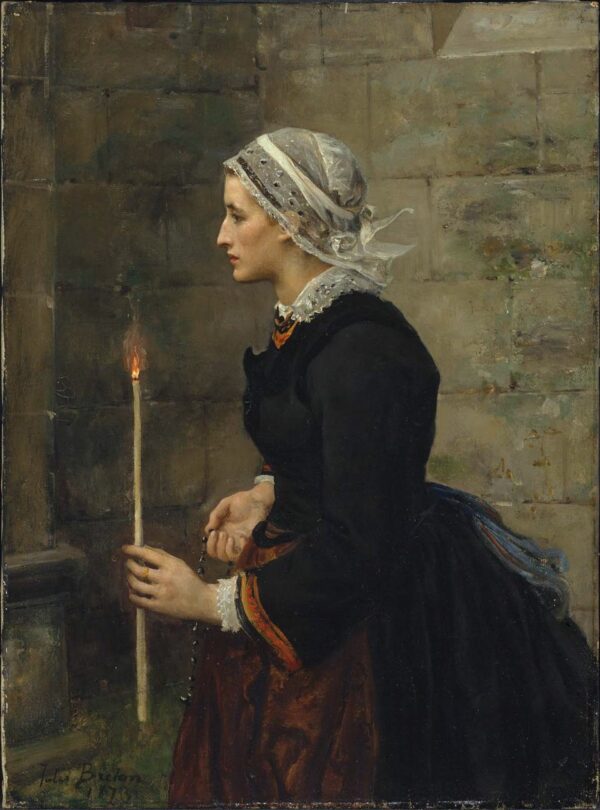
Woman with a Tapered Candle, Julie Breton
The image of candles and candle light can be seen in many paintings throughout art history, having been used not only as decorative items, but also for symbolic and technical purposes. They are a highly versatile object, utilised by artists throughout time to emulate a range of emotions and atmospheres in their work. In still life, the burning candle often represents the passing of time, whilst in scenes of genre the candle’s role often relates to the context of the piece itself.
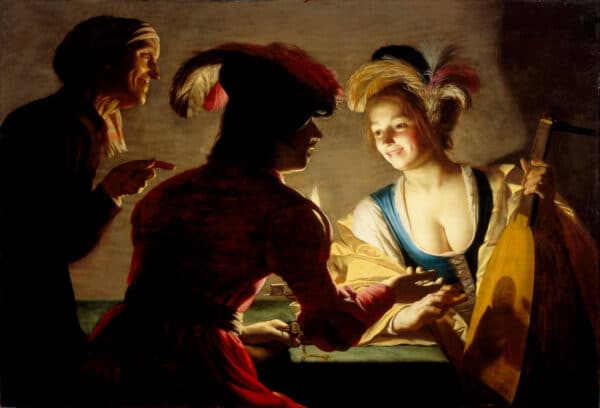
Gerard Van Honthorst, The Matchmaker, 1625
For example, a candle can be seen illuminating compositions such as The Matchmaker by Gerard van Honthorst (previously discussed in our journal on the chiaroscuro technique), in which the flickering flame parallels the mischievous matter of the work. On the other hand, the elegant taper that takes the focal point of Jules Breton’s Woman With a Taper is most likely an allusion to the subject’s strongly burning piety; also reinforced by the prayer beads held in her other hand.
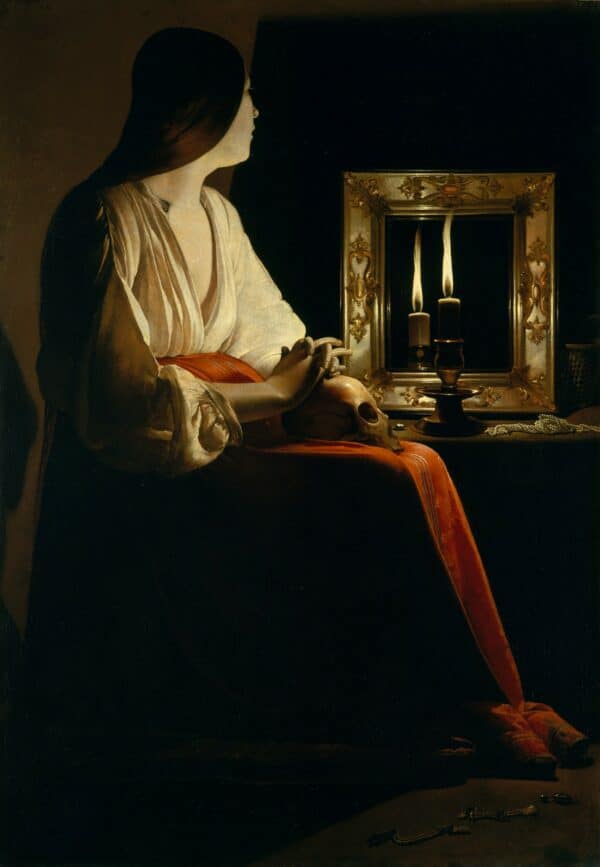
The Penitent Magdalen, Georges de La Tour, Oil on Canvas, ca. 1640
One more artist, whose use of the candlelight in his paintings is renowned, is the French Baroque painter Georges de la Tour. De la Tour was born in 1593 and often incorporates the imagery of a candle within his work. By doing so, he not only demonstrates the longevity of the object’s place in domestic history, but shows its diversity.
These characteristics of the candle are exemplified in de la Tour’s painting The Penitent Magdalen. In this scene we see Mary Magdalen sitting alone having renounced superficial pleasures for piety. Amongst other symbols of her penance, de la Tour uses the nearly burnt out candle to muster a sense of quiet contemplation through toned down chiaroscuro whilst simultaneously referring to Magdalen’s spiritual enlightenment with the lit flame.
The Use of the Match Box in Art
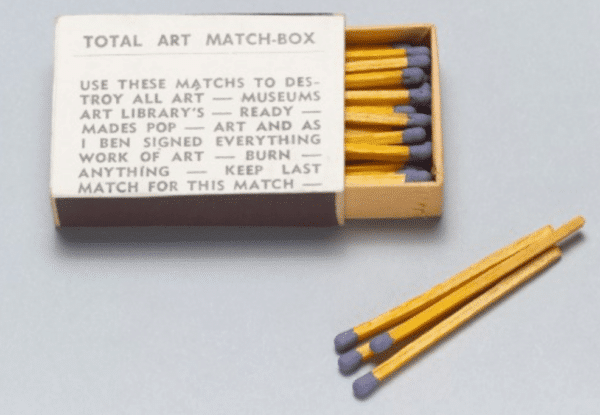
Total Art Match Box, Ben Vautier, Altered Readymade, c.1965
Whilst candles and their light have been used more formally in painting, given their later invention, matches and match boxes don’t appear as frequently as one might expect scenes of genre or still life. Instead, the match box can be seen as a recurring motif in contemporary art, including readymade pieces and works of assemblage.
In particular, the match box was frequently used by artists of the avant-garde movement Fluxus, which emerged in the 1960s. Heavily influenced by Dada, Fluxus believed more in the process of creating art than the final product. The movement sought to achieve inclusivity and interactivity by combining interdisciplinary media and techniques in a playful and unconventional manner.
Given the size, availability, portability and interactivity provided by a box of matches, they became a staple of the Fluxus portfolio. Amongst others, Fluxus founder George Maciunas created many interactive pieces and small sculptures by using brightly designed match boxes, often filled with confetti or instructions. Whilst member Ben Vautier used matches and their box to convey mischievous messages.
In his altered readymade Total Art Match-Box, for example, Vautier humorously encourages the use of the blue tipped matches in order to burn down art establishments – an unserious sentiment indicative of the disruptive and ‘anti-art’ ideals of the Fluxus movement.
Adorning Your Home with Candles and Matches
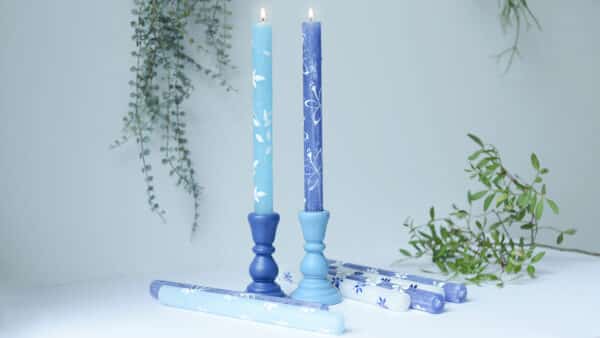
Blue & White Company Hand Painted Matches
Despite the contrast in the way candles and matches appear in art, one being a familiar image in interior scenes and the other more often found as an object of contemporary art, nowadays we know they make a perfect pairing.
In our new collection of matches we have taken these two domestic staples and put our Blue and White twist on them. So, if you are looking for something elegant, beautiful and blue to adorn your home, we encourage you to take a look at our new designs!
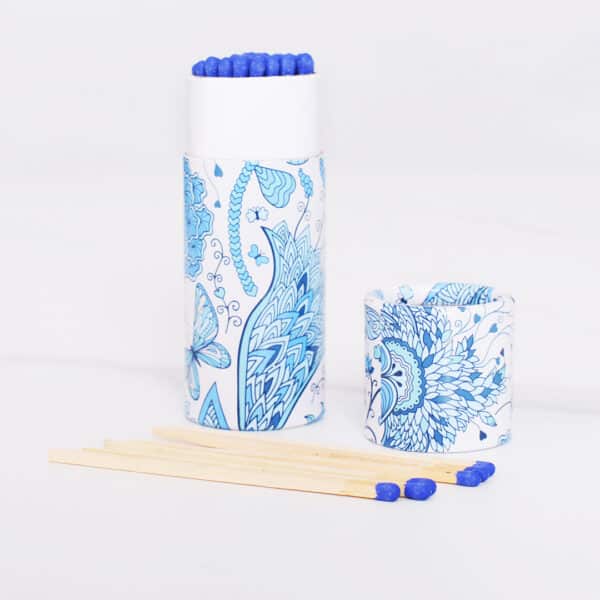
Blue & White Company Cylinder Matches, Blue Paisley
